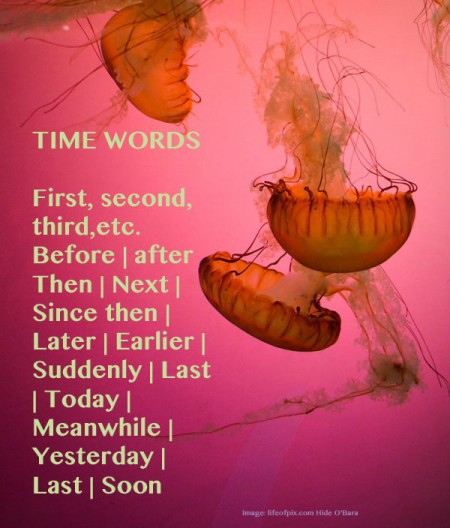Writers should respect timelines.

Ten years ago, I taught writing at a university and the world-wide-web was just coming online and theories of hypertext fiction were bouncing around. One popular theme of these stories was that the timeline didn’t matter. Imagine a central event and going out from that, like spokes in a wheel were the other story events. The theories said that non-linear stories were possible; translated, that means a story’s timeline didn’t matter.
Since then, we’ve seen stories that mess with the timeline with varying degrees of success. For example, Paul Fleischman’s book, Whirligig, explores the results of an action. In doing that, some sections jump 25 years into the future, while others explore the results of actions closer in time to it happening. The story has a reason to mess with the timeline and does so effectively.
But most of the time, writers should respect timelines. We live linear lives; we can’t skip ahead a year and then skip back. The act of reading is a linear act: we start at one point and read forward. Sure, some of you read the ending last. But even then, you go to five pages before the end and read forward. Humans are hard-wired to understand time lines, and when you mess with the timeline of a story you risk reader confusion.
On a micro-level, I think this is especially important. Let’s say that you have three events that happen in this order: A, B, and C. Event A happens first, Event B is second, and Event C is third.
It’s crucial that the author clearly know the event order; however, the storyteller often writes the events out of order. Here’s some strategies that I see.
Event C is the most interesting. In an attempt to keep the reader’s interest, authors sometimes cut straight to C but then circle back to pick up A and B. The question here is why come back to A and B? Why not just make this a big scene cut and leap ahead to C?
Events A, B, and C are episodic and there’s no cause-effect relationship. Here the events have no relationship except perhaps the time of day or season of the year. In this case, I wonder why these events belong in the same story. Episodic stories do work, but they are hard to hang together without the cause-effect relationship. Perhaps, you really need A caused D, which caused F. Maybe that story would be a more satisfying read.
A, B, and C are presented in order, but the relationship is vague. In this case, the writer needs better transitions that make the relationships clear. Sometimes, the transitions will short and sometimes prolonged. However, you can’t leave these out or the reader is lost.
In a current WIP, I found myself getting things out of order even within a paragraph. Jake falls into the water and in an attempt to keep hypothermia at bay, others offer an odd collection of clothing for him to wear. He changes inside a school bus.
My first draft had him putting on clothes from a variety of people, and then getting on the bus to—well to change clothes. That didn’t work! Instead, he had to climb up the bus steps, someone hands him clothes, one piece doesn’t fit and he trades it for another, and so on.
Did it make sense out of order? Sorta. But it’s much easier to understand when I took the time to straighten out the time order. Time words are your friends: use them to help keep things straight. Whether it’s on a micro or macro level, respect the timeline of your story—unless you have a really good reason to tell things out of order, don’t do it!